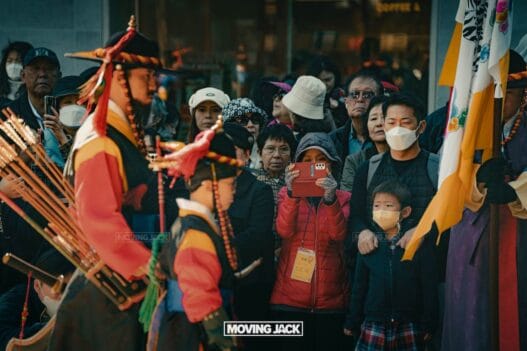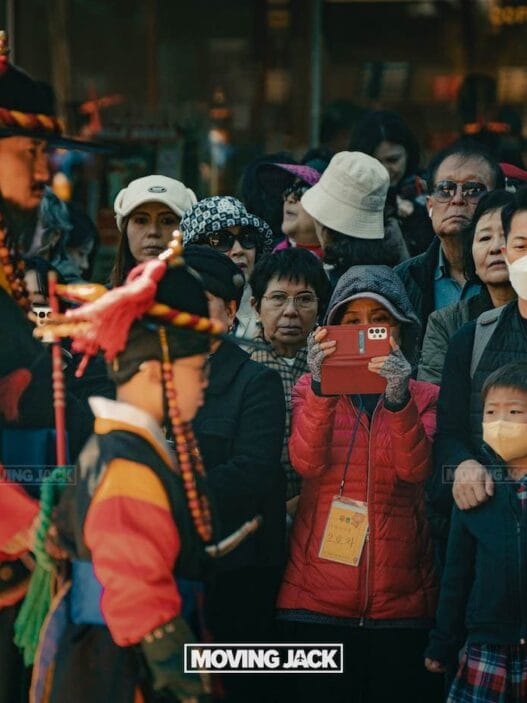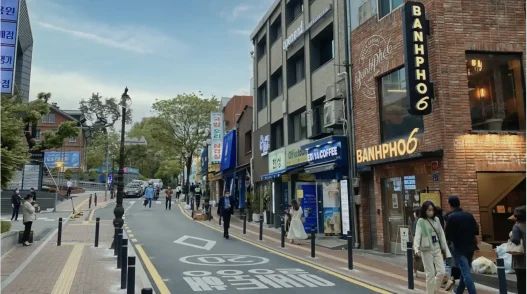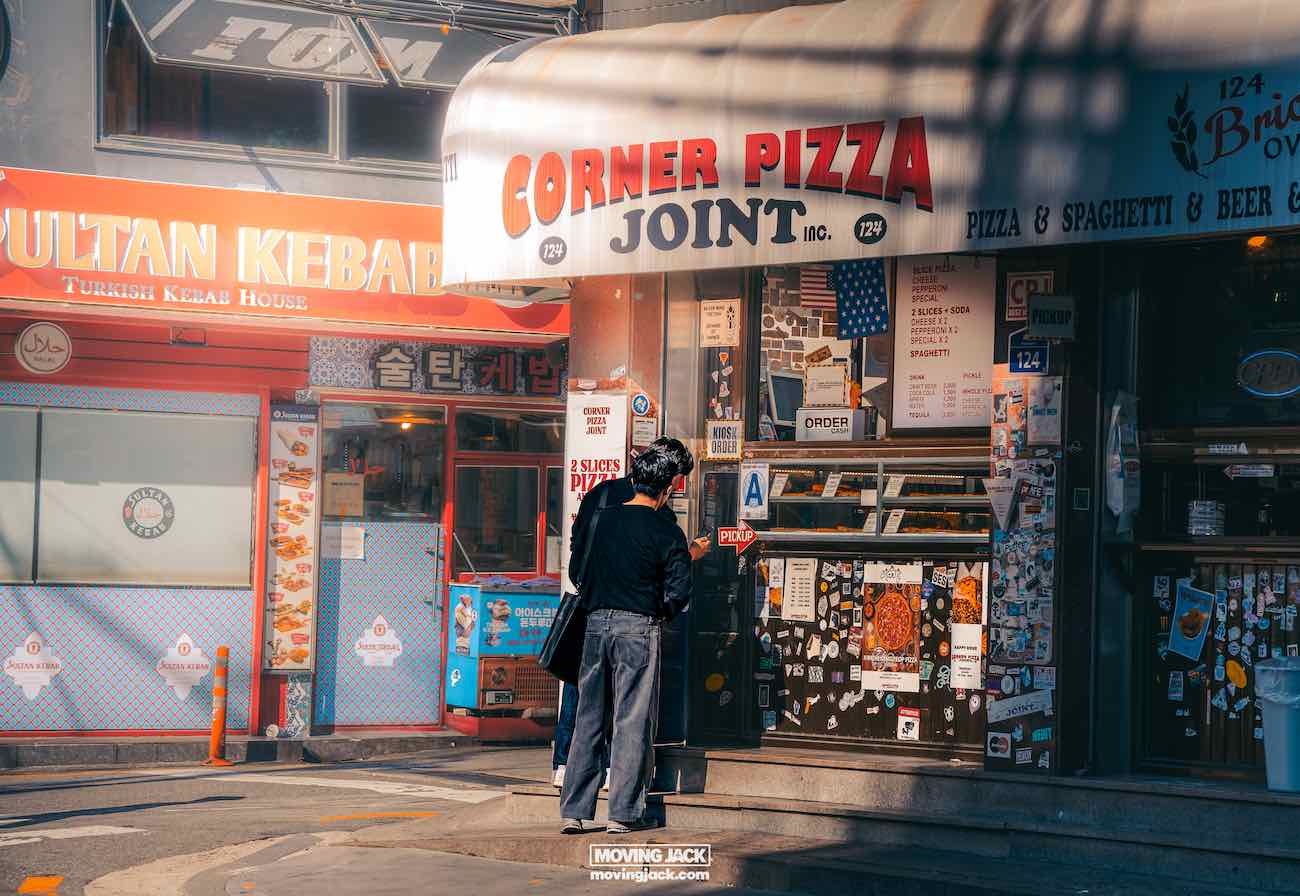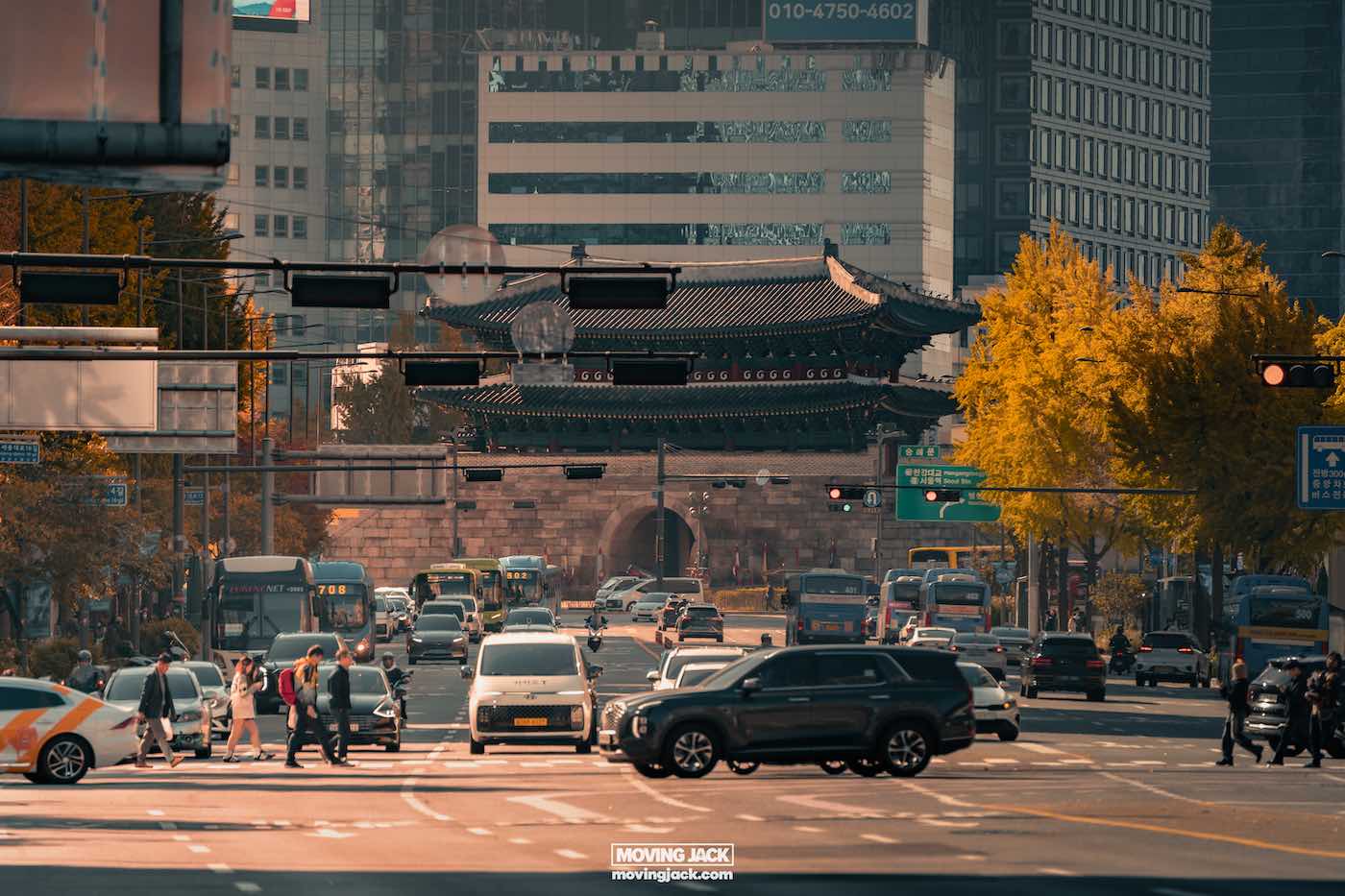Here’s the thing about Gyeongbokgung Palace, everyone tells you it’s a must-visit… and it is! 🙂
But! It’s one of the most crowded attractions in Seoul…
After living in Seoul for 18 months, I’ve figured out when and where to go to avoid most of the crowds and enjoy this incredible place to the fullest.
Here’s what I’ll show you: the best route to walk, and the photo spots that most visitors don’t see.
Quick Overview: Palace is Seoul's largest royal palace, built in 1395 (!), and yes, it really is spectacular. The challenge is that it receives over 5 million visitors annually!
Gyeongbokgung Palace
Before diving into the detailed strategies, watch my 31-minute Gyeongbokgung Seoul Palace 4K Walking Tour where I show you exactly how to navigate the palace:
This walking tour reveals the insider route to more relaxed and quiet spots (I visited Gyeongbokgung 10+ times in my first year already since this is where most friends and family want to go when they visit).
You’ll see exactly what I mean about the crowds and hidden spots in the video. The written guide provides much more additional context, tips, and practical information that didn’t make it into the video.
How to Avoid the Crowds Route
Although there is a back entrance which is much less crowded, we’ll start at the front gate because it is one of the most impressive spots.
Plus, there are so many people wearing the traditional hanbok outfits that you wouldn’t want to miss that! Crowds are part of the experience in this case.
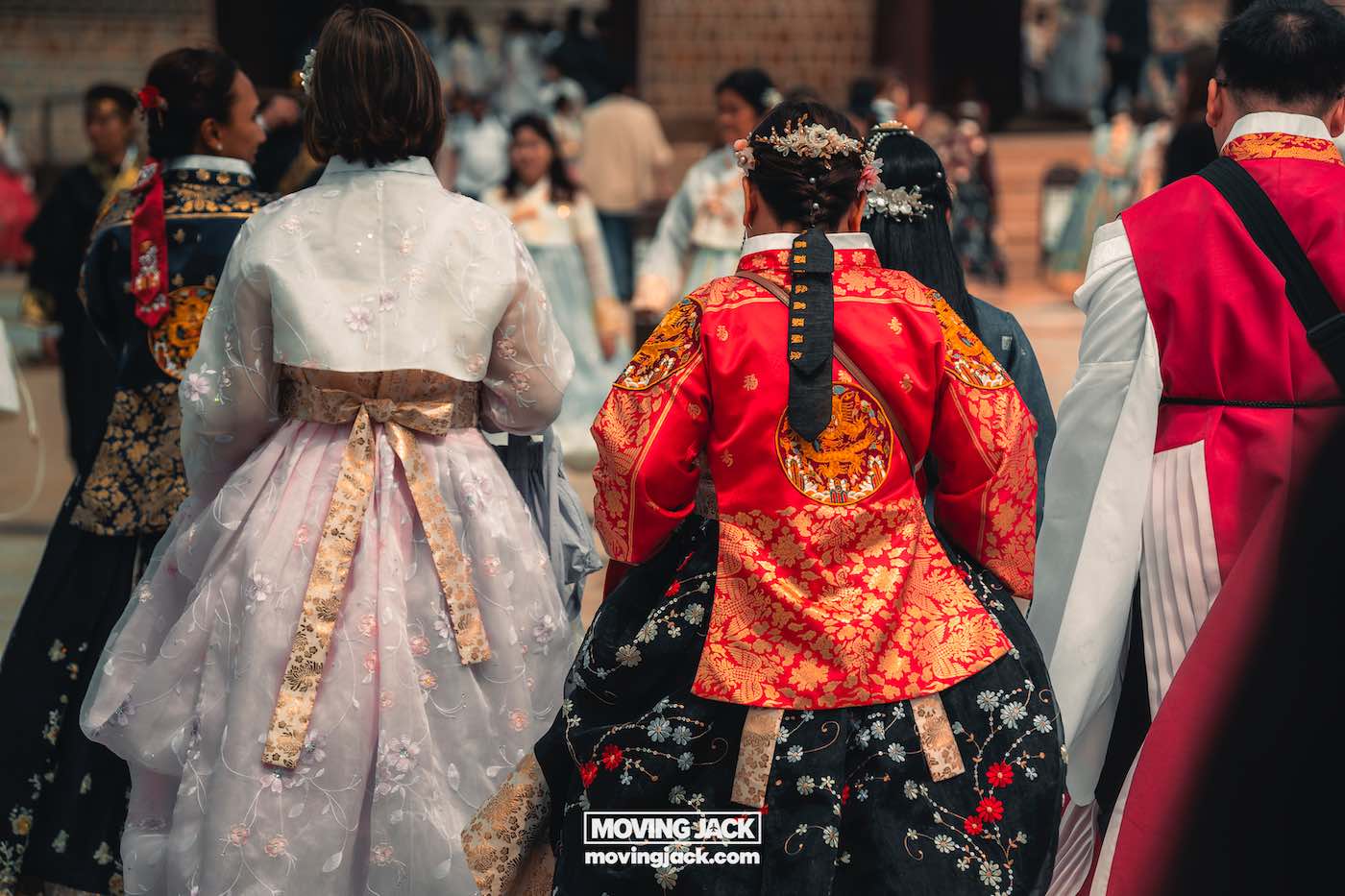
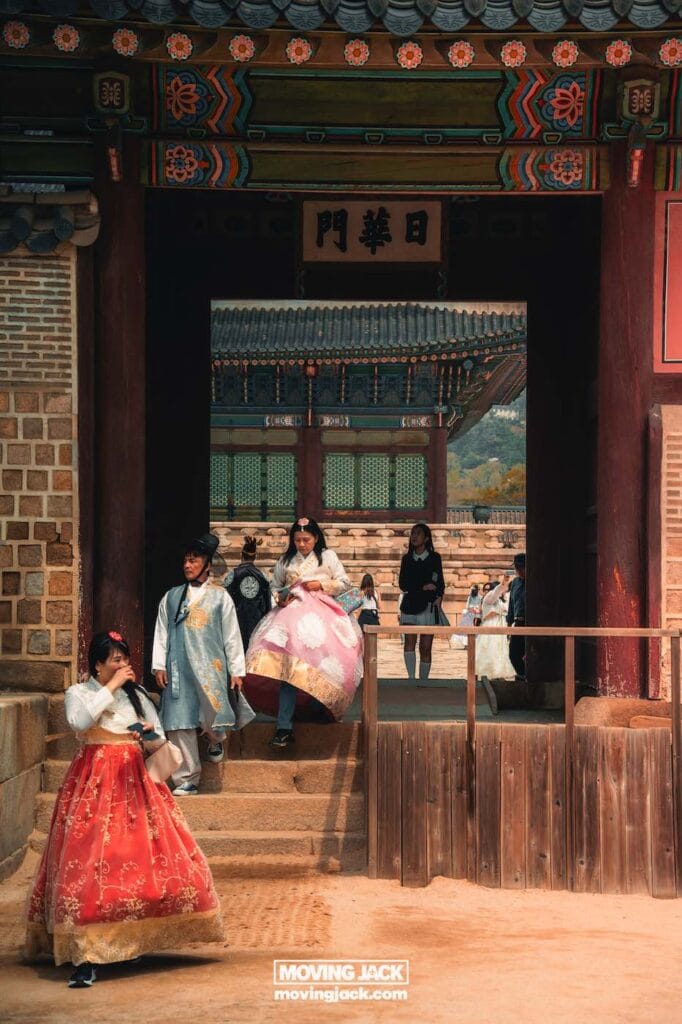
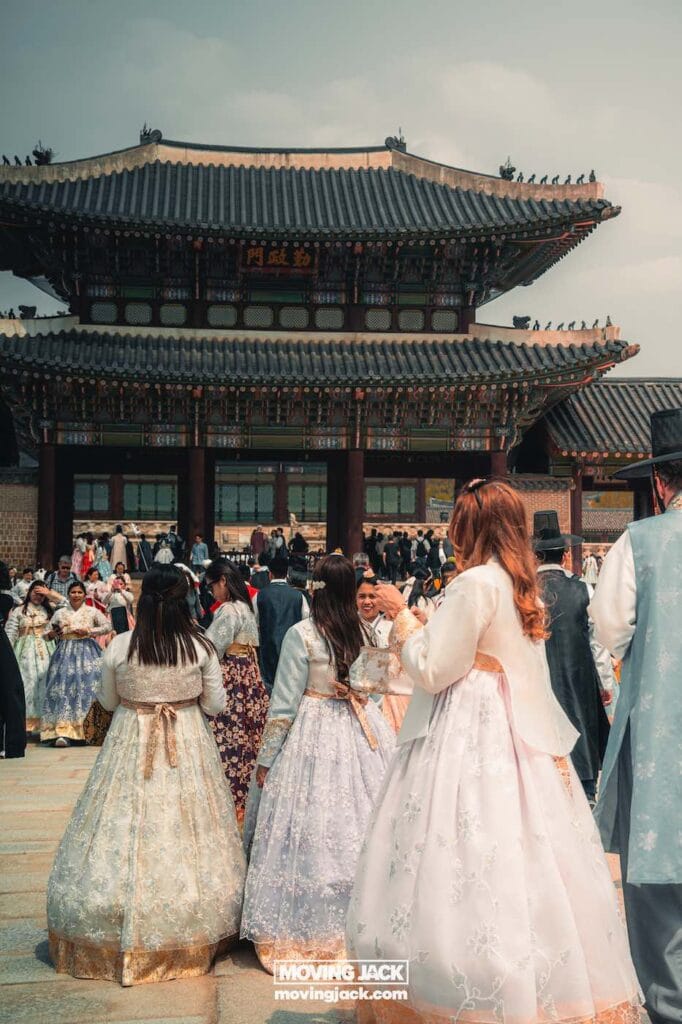
Sometimes crowds actually enhance the experience, and the main entrance is definitely one of those cases. Watching families in matching hanbok coordinating photo shoots, couples in traditional dress, and international visitors from all over the world experiencing Korean culture is really cool.
The Smart Strategy: After checking out the main entrance and getting your photos with the hanbok crowds, we’ll move away from where everyone else goes. Most tourists follow the obvious path but we’re going to head to areas that most people don’t discover.
The palace is impressive, but it is also a huge park for a nice and relaxed afternoon.
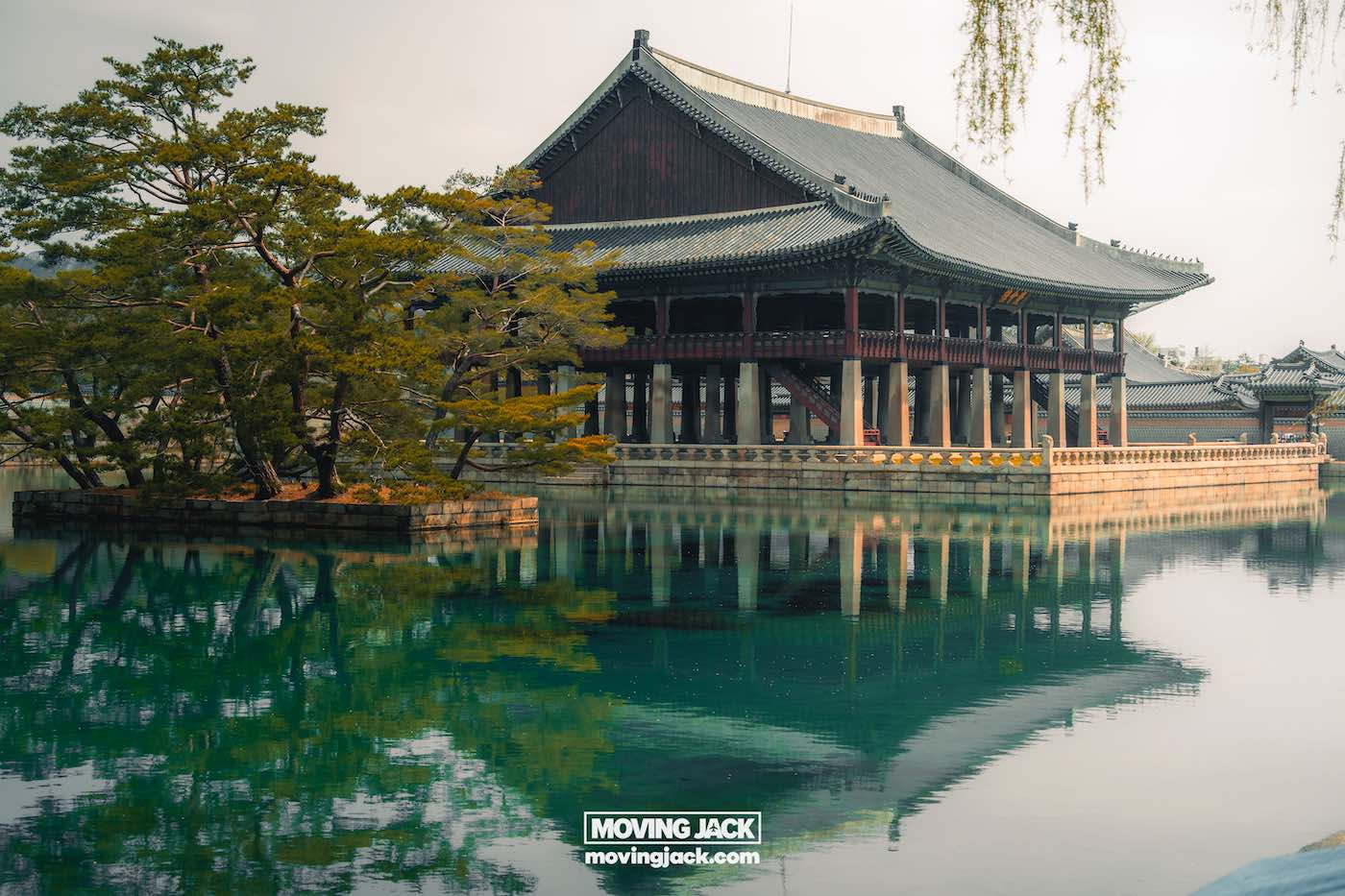
Why This Works: The palace covers 57 acres, which means there are plenty of quiet courtyards, garden areas, and viewpoints where you can essentially have the place to yourself.
Some of the most beautiful architecture and peaceful spots are tucked away in the northern sections, where tour groups go much less often.
Below is the route I’m walking in the Walking tour video
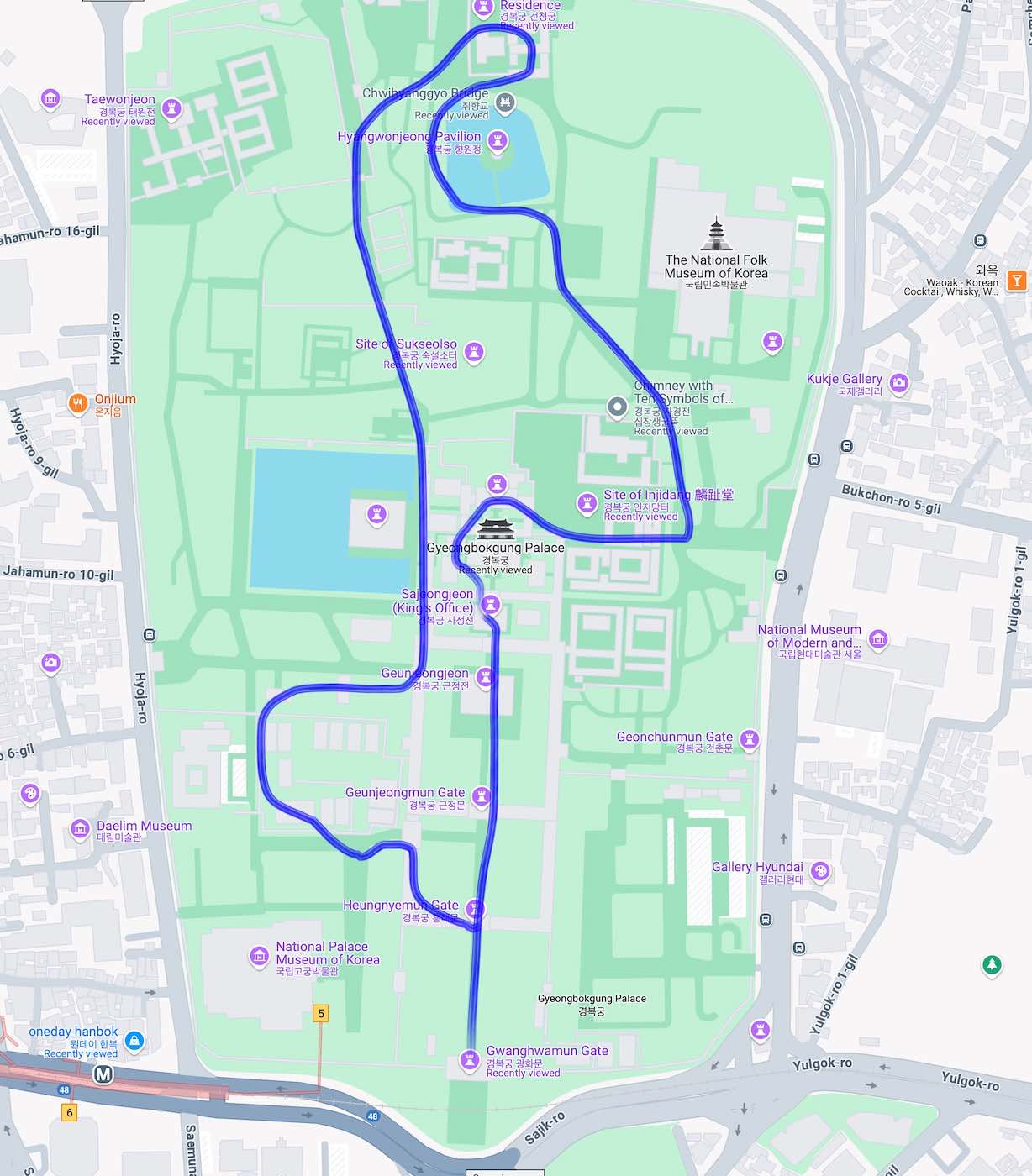
The Hidden Palace Experience: What most people don’t realize is that Gyeongbokgung functions as both a historical site and an ‘urban oasis’ right in downtown Seoul. The back area has quiet spaces where you can actually hear birds instead of tour group speakers.
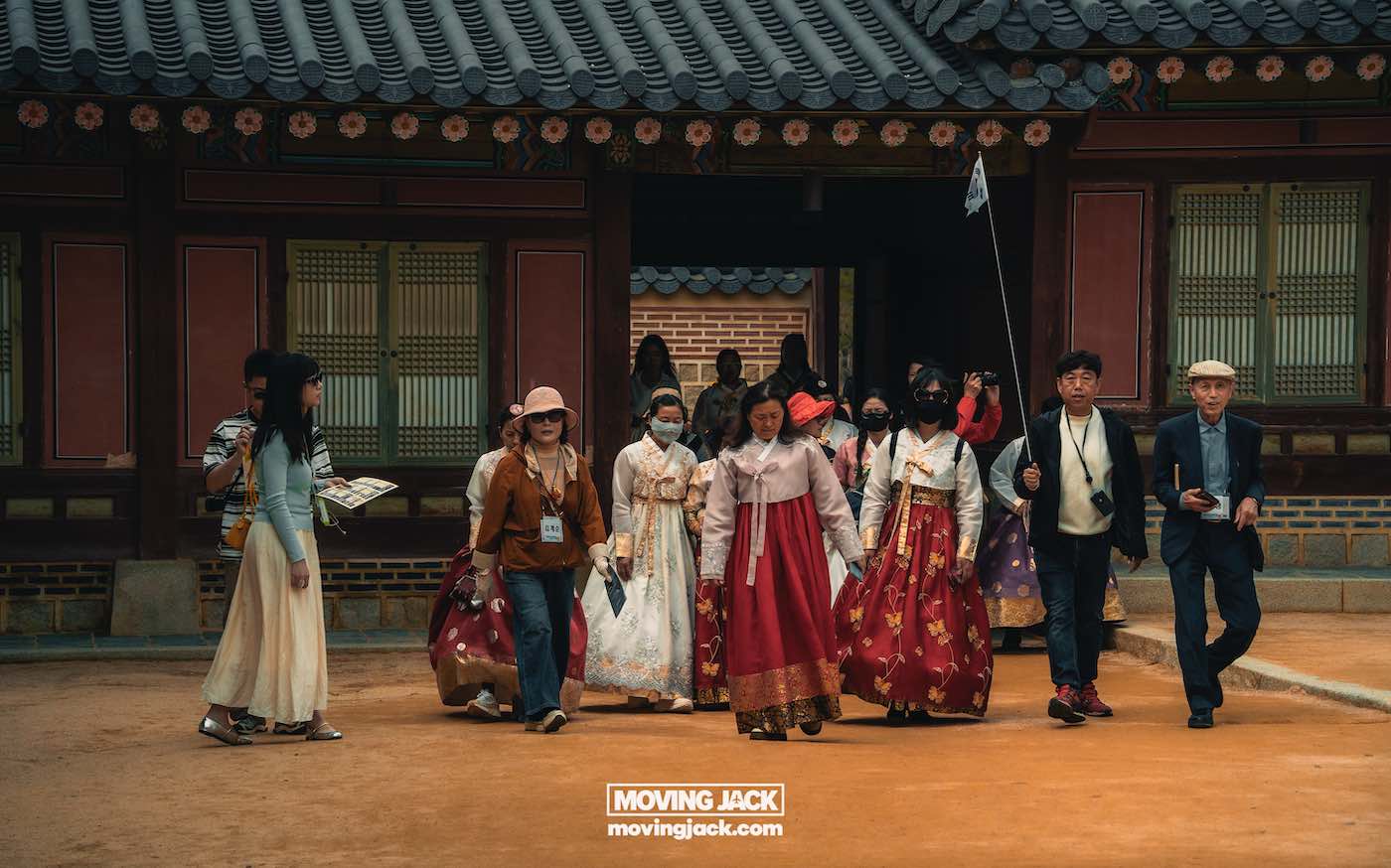
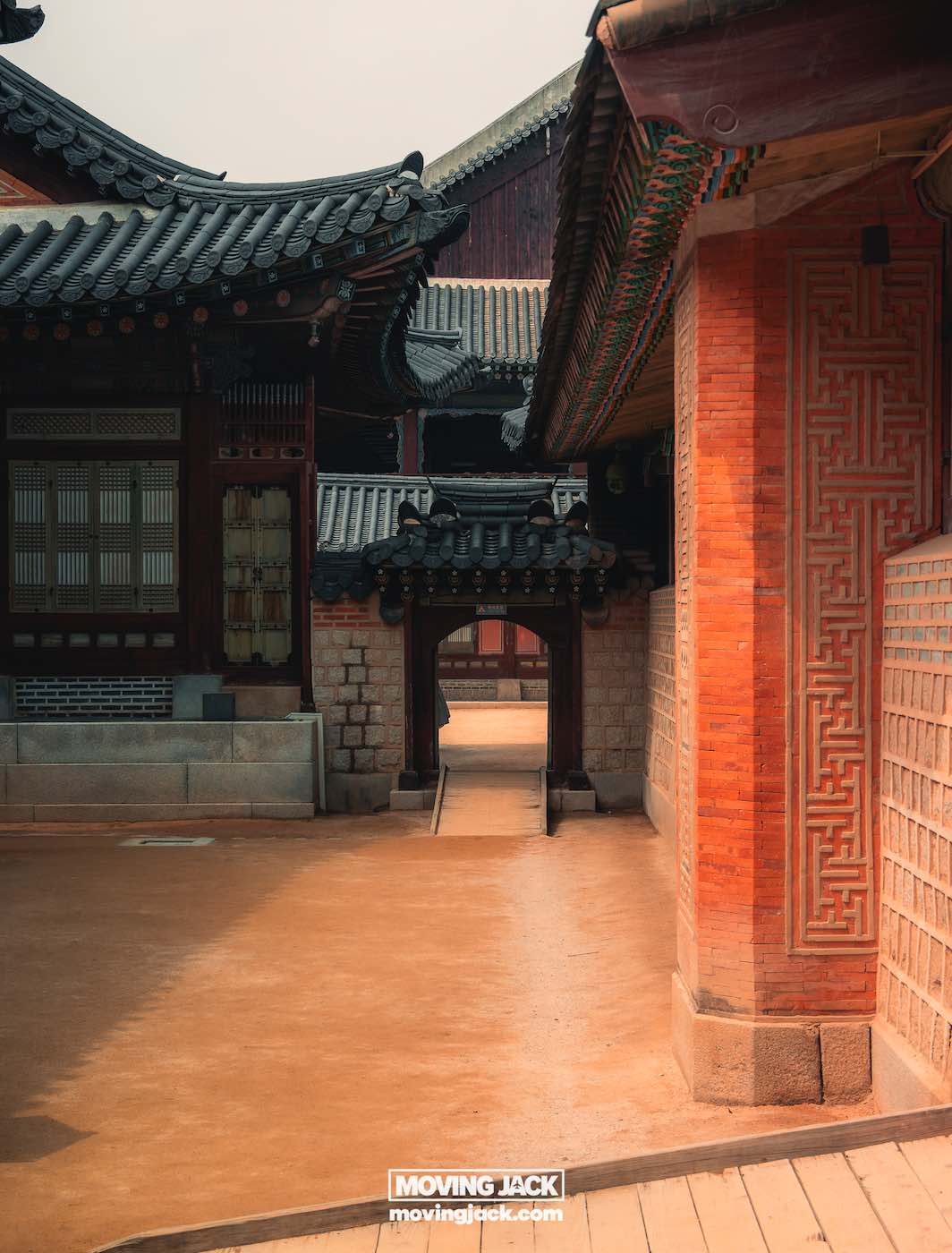
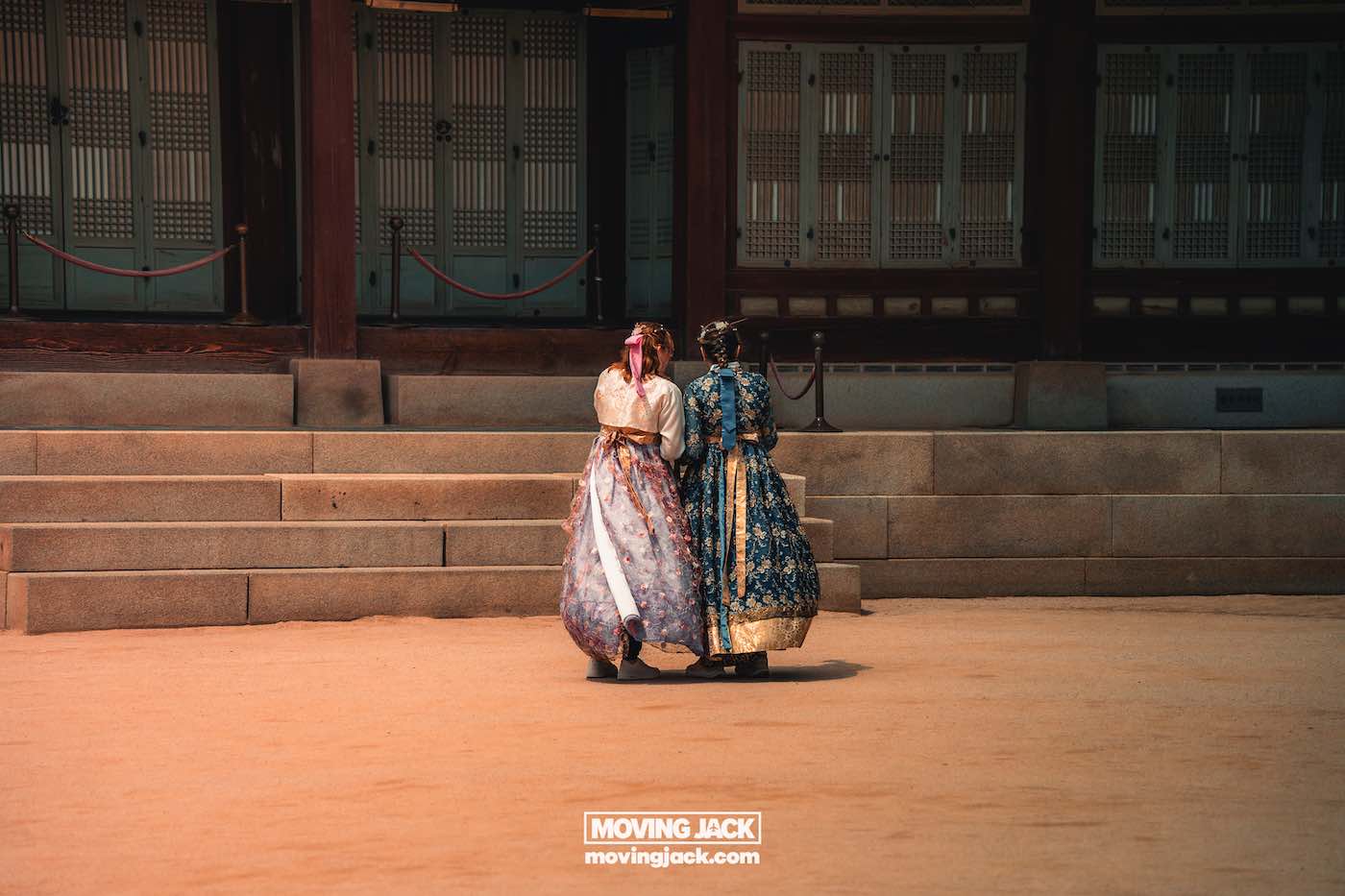
Guard Ceremony Strategy: The Changing of the Guard ceremony happens three times daily (except Tuesdays).
Tip: While the ceremony is pretty cool, I actually prefer the changing of the guards ceremony at Deoksugung Palace because they use more musical instruments, it is less crowded and thus much easier to take some amazing photos. It's around 15 to 20 minutes walking from Gyeongbokgung to Deoksugung Palace.

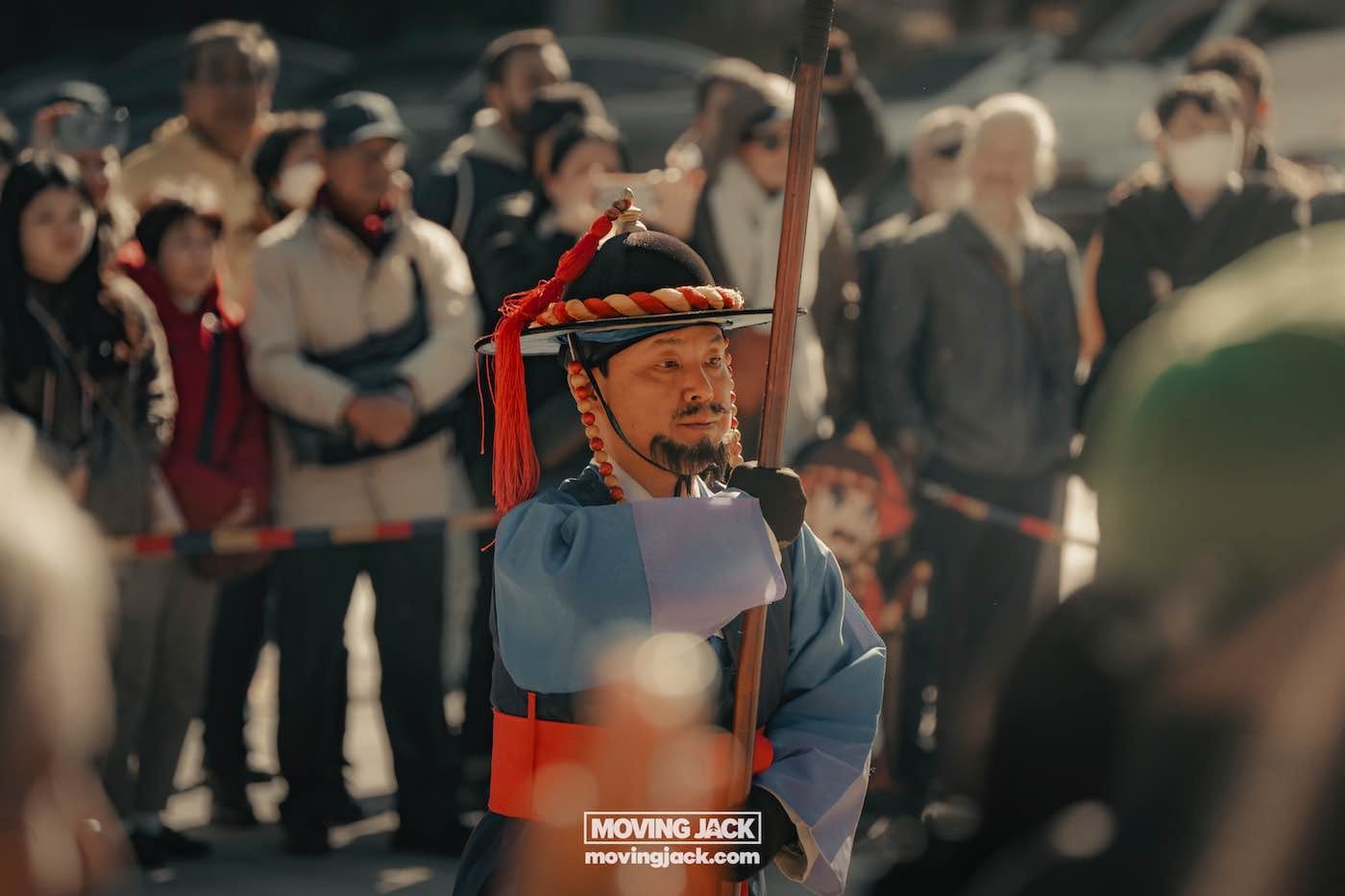
Secret Spots Worth Finding
The northern courtyards are honestly some of my favorite areas in the entire complex. They are more quiet and the views are really cool. The more quiet spots in the Walking Tour video are:
- Chimney with Ten Symbols of Longevity
- Chwihyanggyo Bridge
- Geoncheonggung Residence
- Jibokjae
- Site of Sukseolso
The eastern courtyards are honestly some of my favorite areas in the entire complex. These residential sections give you a sense of authentic palace life without the tourist atmosphere. Most people walk right past them heading toward the “main” attractions.
Best Hotels near Gyeongbokgung Palace
Staying in a hotel near the palace is a smart choice; it’s in the heart of the city, easy to access with many subway lines, and there are lots of things to do and see in the area called Gwanghwamun.
Tip: Hover with your mouse over a hotel in the map below, to see the walking distance and route to the entrance of the palace, the Gwanghwamun Gate.
Travel Tip: Traveling with kids? or as a couple? Find out which area is best for every traveler in my complete where to stay in Seoul guide.
Seasonal Guide to Gyeongbokgung Palace
The palace changes a lot with the seasons! Not only because of nature, but also because visitors can wear summer and winter-style Hanbok outfits.
Gyeongbokgung in Spring (March-May)
Spring is absolutely beautiful here, but cherry blossom season (late March to early April) means dealing with serious crowds, mostly local Koreans.
The blossoms are spectacular, but cherry blossoms season doesn’t always start on the same date, of course it depends on when the flowers start blooming so it might be tricky to plan your trip accordingly.
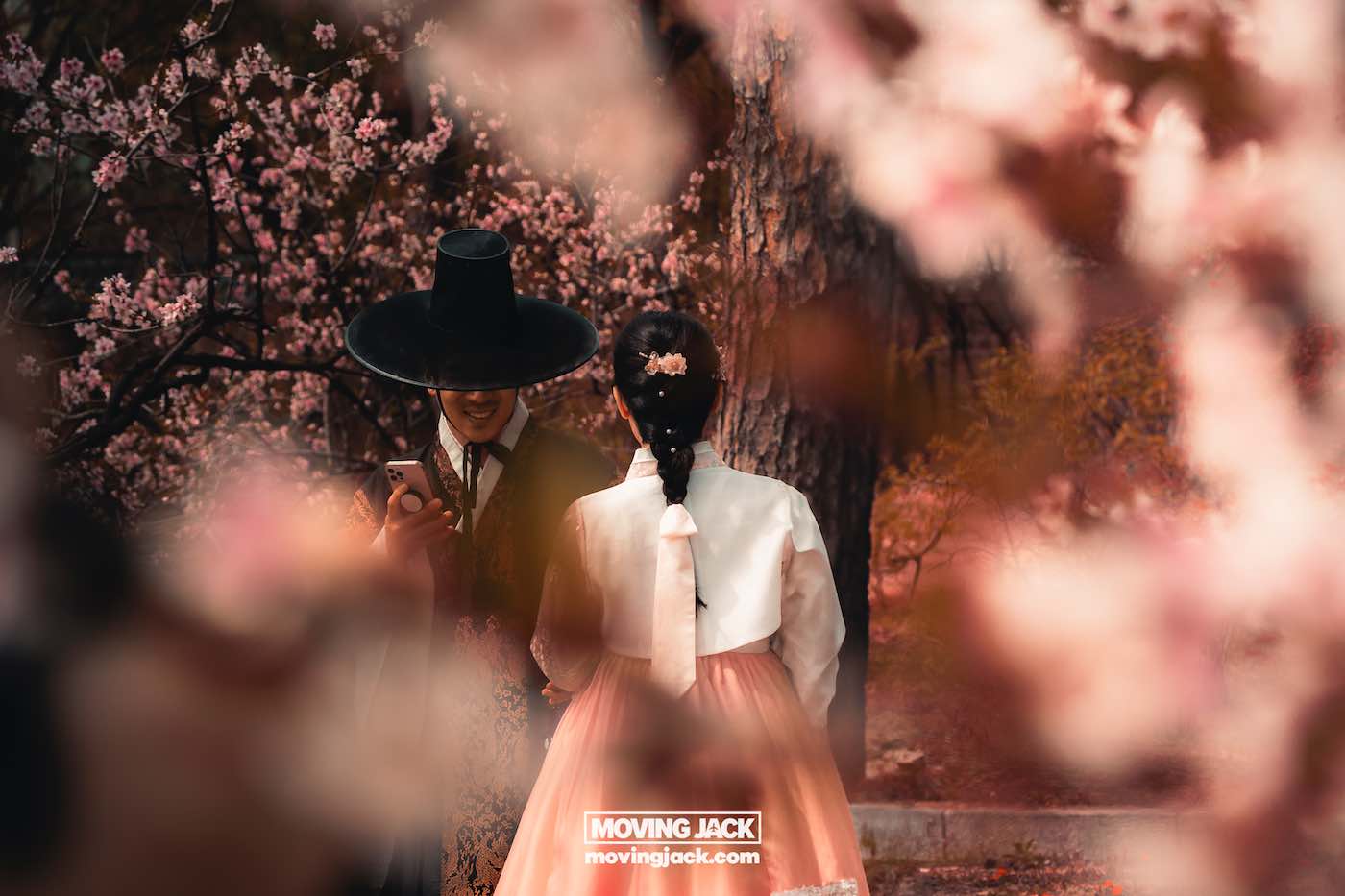
The weather can be unpredictable in spring, cool mornings, warm afternoons, rain, so layers are essential.
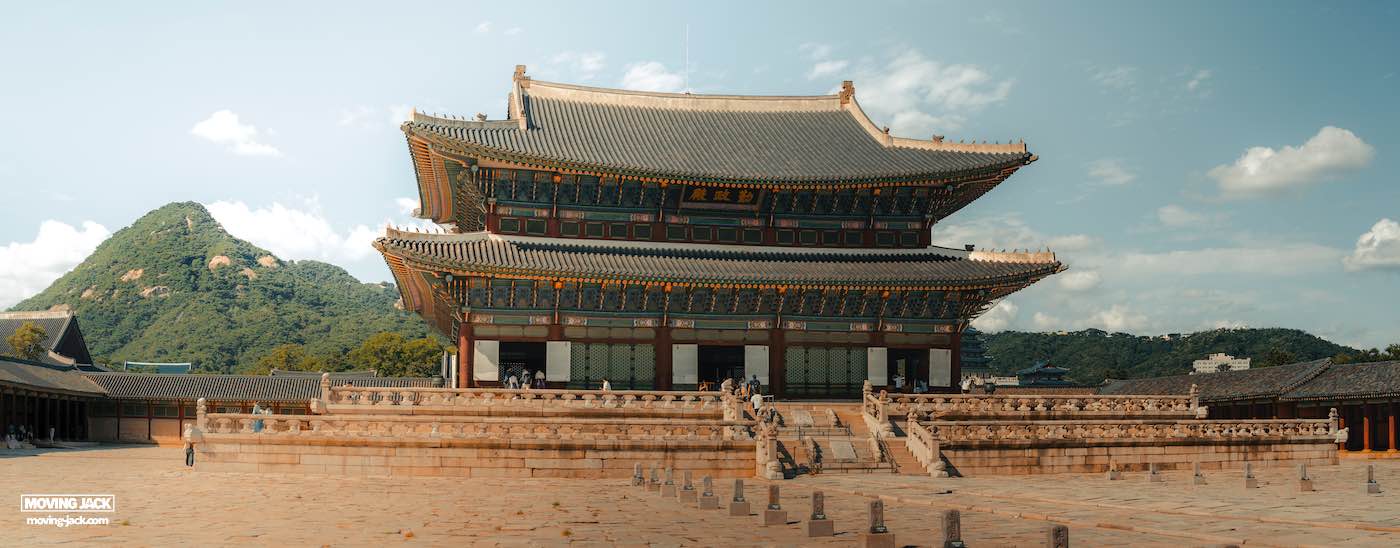
Gyeongbokgung in Summer (June-August)
Summer means starting early to beat both the heat and crowds. The palace opens at 9:00 AM. The hanbok rental shops offer lighter fabrics during summer, which actually creates some vibrant photos, though you’ll still be wearing multiple layers in humid weather…
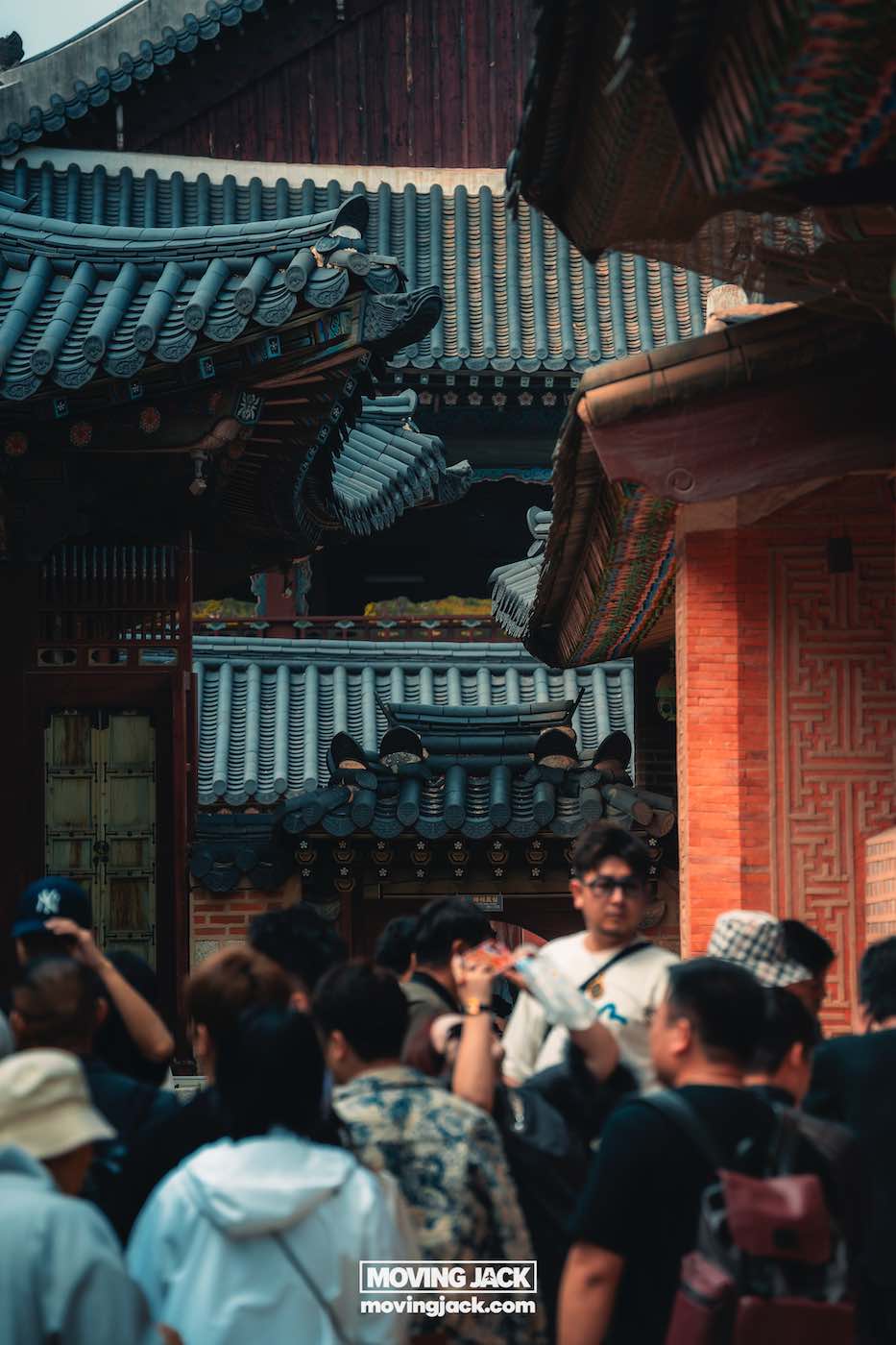
Even when it’s the hottest time of the year it is also the most crowded since most of the Western world is on summer holiday. So, if you can, avoid end of July and August.
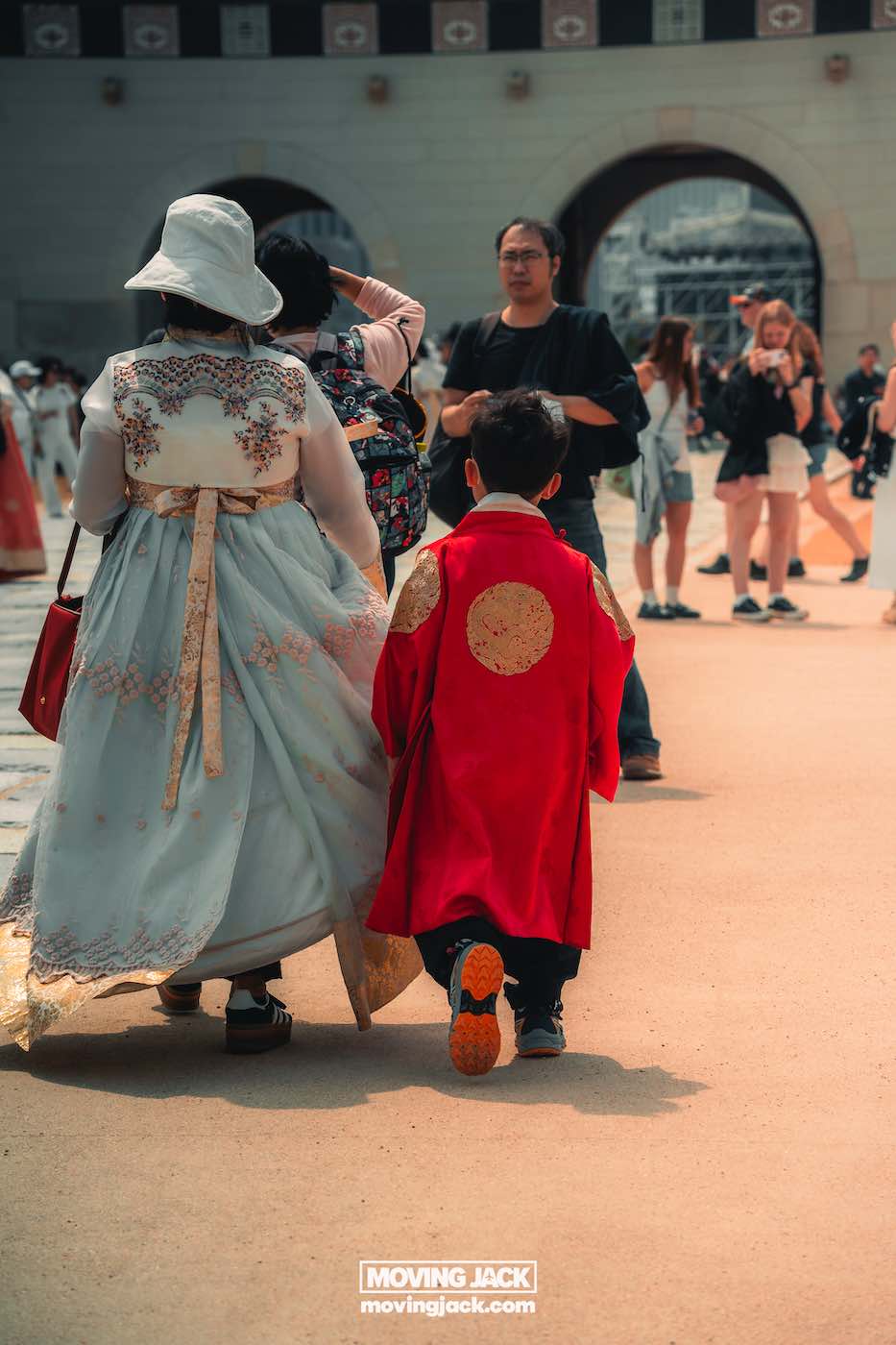
Gyeongbokgung in Fall (September-November)
This is the best time to visit. The maple trees have incredible shades of red, orange, and gold (peak around mid-October), and the weather is really comfortable. It’s also less crowded than the summer.
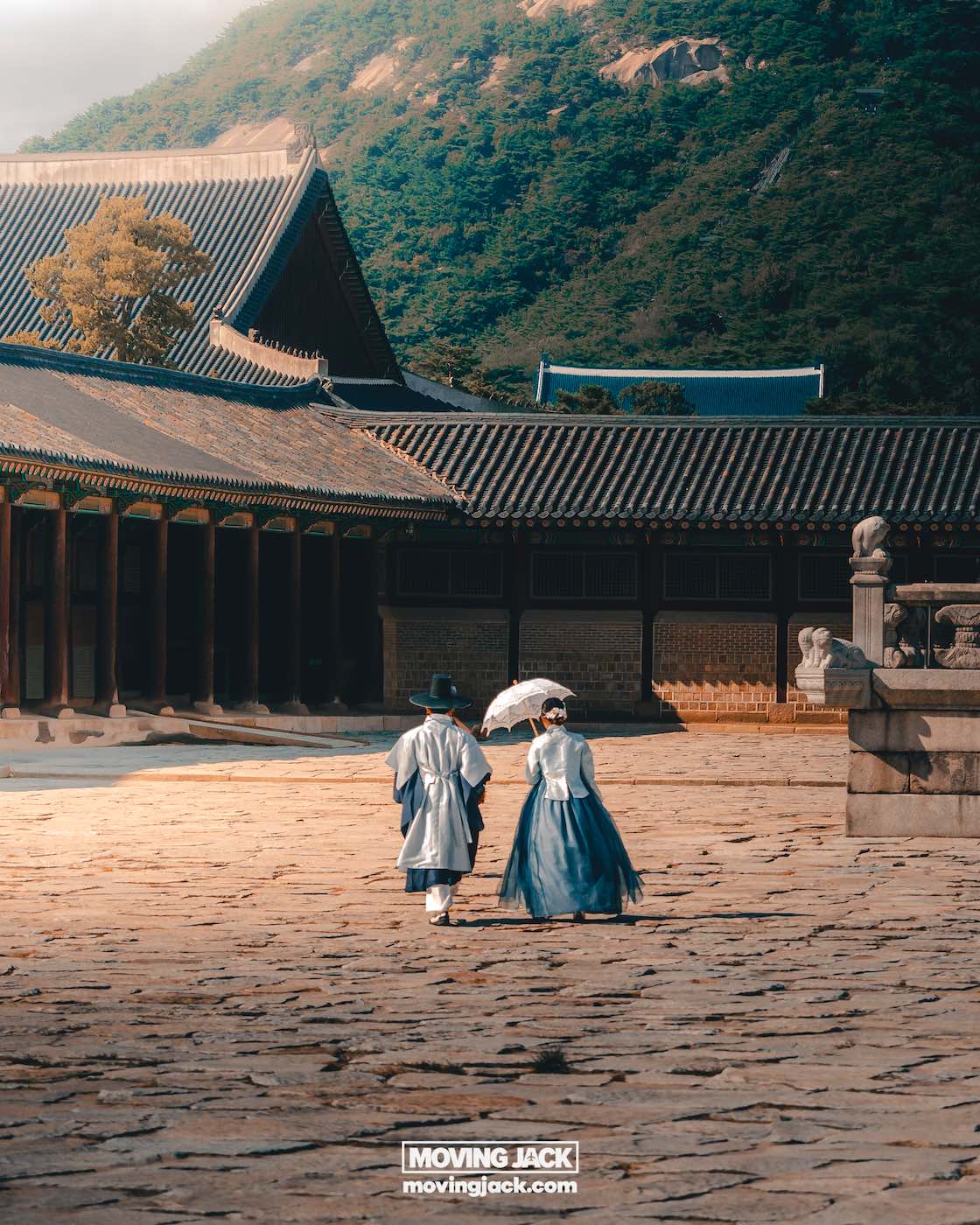
Gyeongbokgung in Winter (December-February)
Winter transforms the palace into something completely different.
It’s quieter, more peaceful, and honestly more authentic.
Fresh snow on the traditional rooflines creates this epic atmosphere that’s perfect for photography.
Seen here below is one of my favorite photos I took of one of the Palace guards. Quite a dramatic photo!

Winter hanbok experiences are special and unique to Korea. The traditional winter versions include thick layers and colors that look just Disney kind of magical.
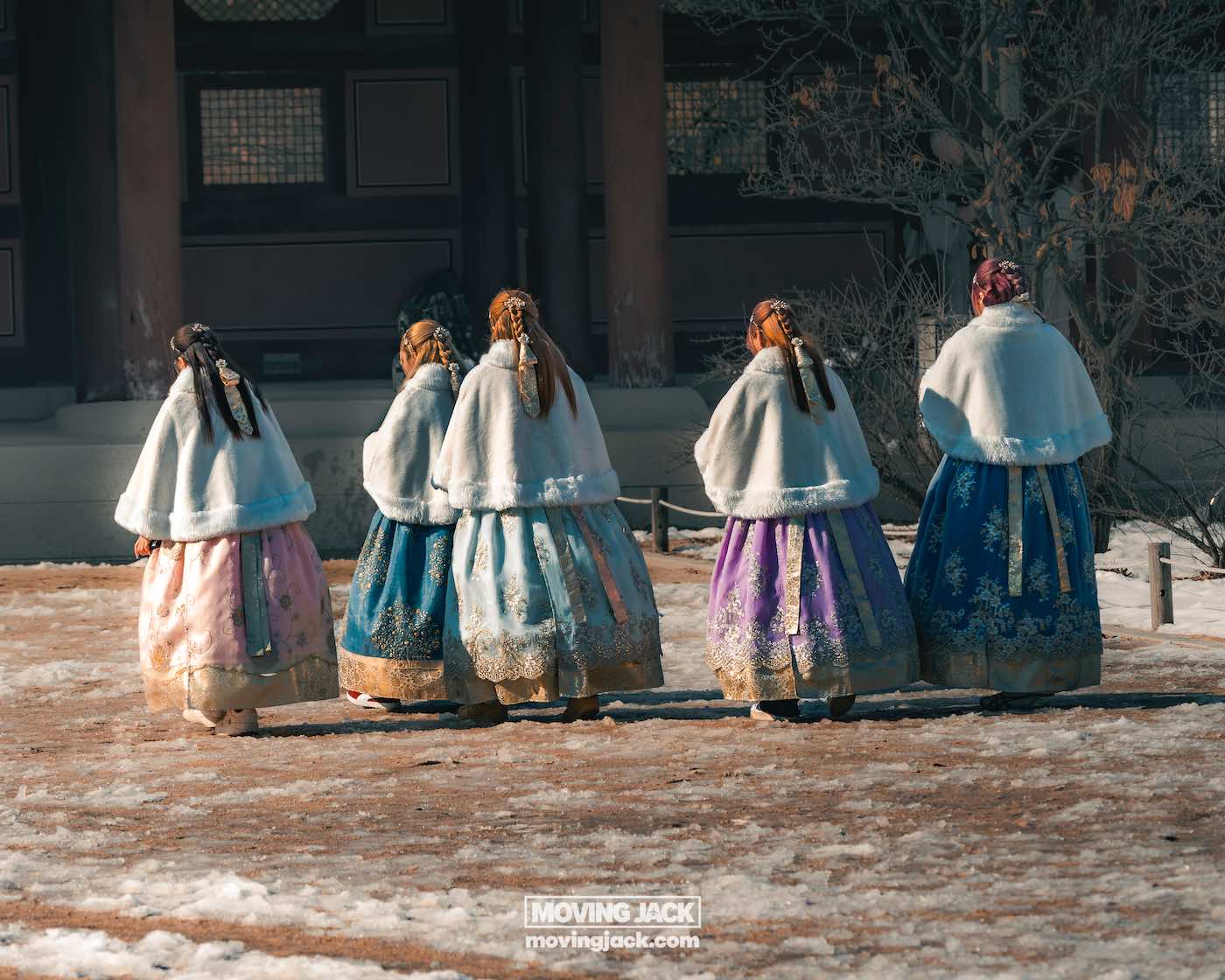
Things to Do Near Gyeongbokgung Palace
One of the best things about visiting Gyeongbokgung is that you’re right in the heart of Seoul. Here are the nearby attractions that make sense to combine with your palace visit:
Bukchon Hanok Village (15-minute walk, some parts are up hill)
This traditional neighborhood is where I’d head straight after the palace. Bukchon is full of preserved hanok (traditional Korean houses) that are still lived in today, which gives it a really authentic feel.
The narrow streets create perfect photo opportunities, especially if you’re still wearing hanbok from your palace visit! Most people just walk the main routes, but the side alleys often have the best preserved houses and fewer crowds.
(In whisper voice) Make sure to not make too much noise when exploring the village. Local security is keeping an eye out for loud behaviour.
Getting there: Use Seoul’s subway system to reach Gyeongbokgung Station (Line 3, Exit 5) for a 15-minute walk, or Anguk Station for a much shorter walk.

Gwanghwamun Square & District (5-minute walk)
Right outside the palace, Gwanghwamun is Seoul’s political and cultural center. The square itself features statues of King Sejong and Admiral Yi Sun-sin – pretty impressive, though honestly more of a quick photo stop than a destination.
What makes this area worth exploring is the mix of traditional and modern Seoul. You’ve got ancient palaces, government buildings, and some excellent restaurants all within walking distance. It’s also where you’ll find some of the best hanbok rental shops if you didn’t arrange that beforehand.
Pro tip: The underground shopping area connects to multiple subway lines and has decent food options if you need a break from walking.
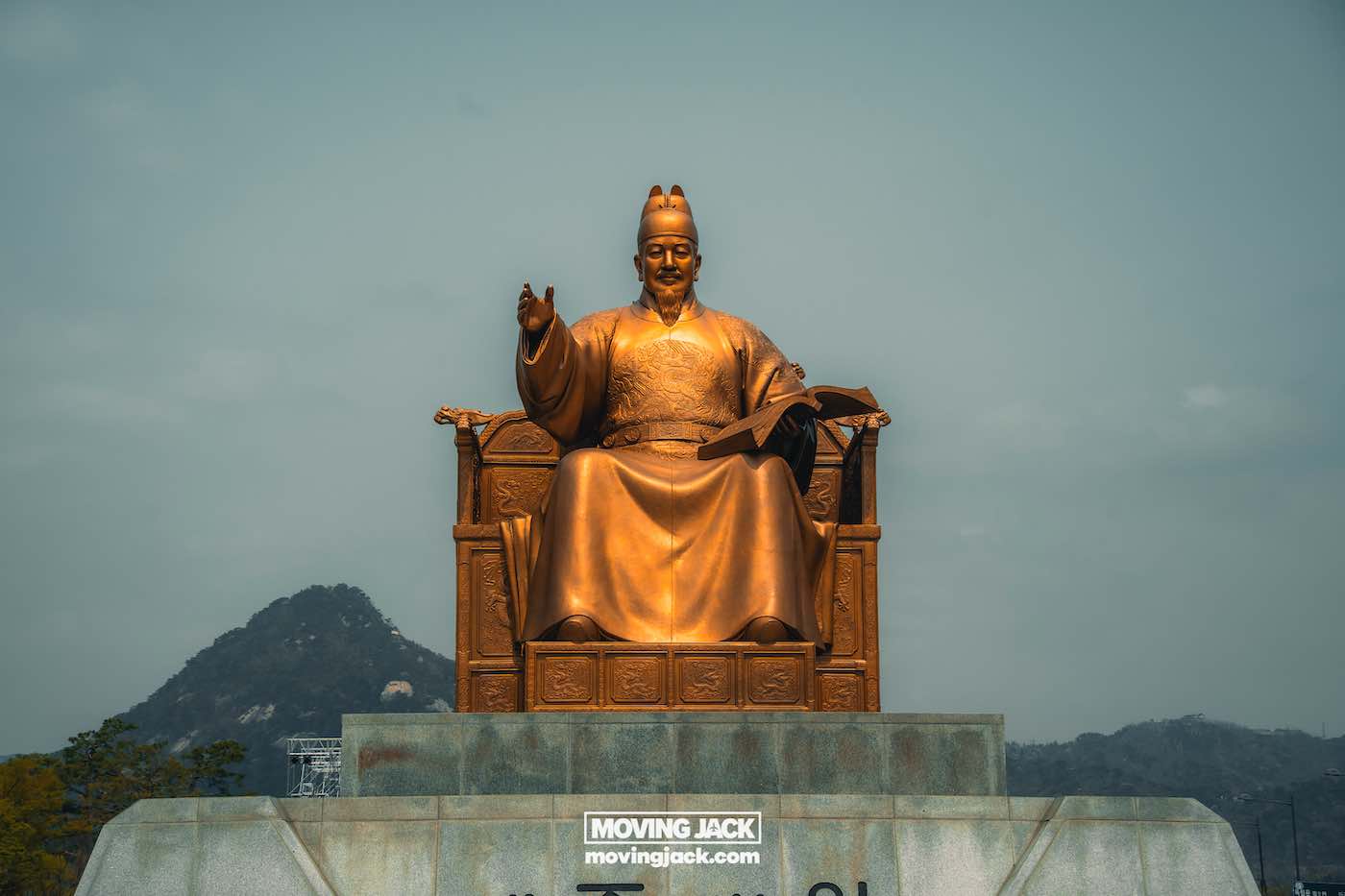
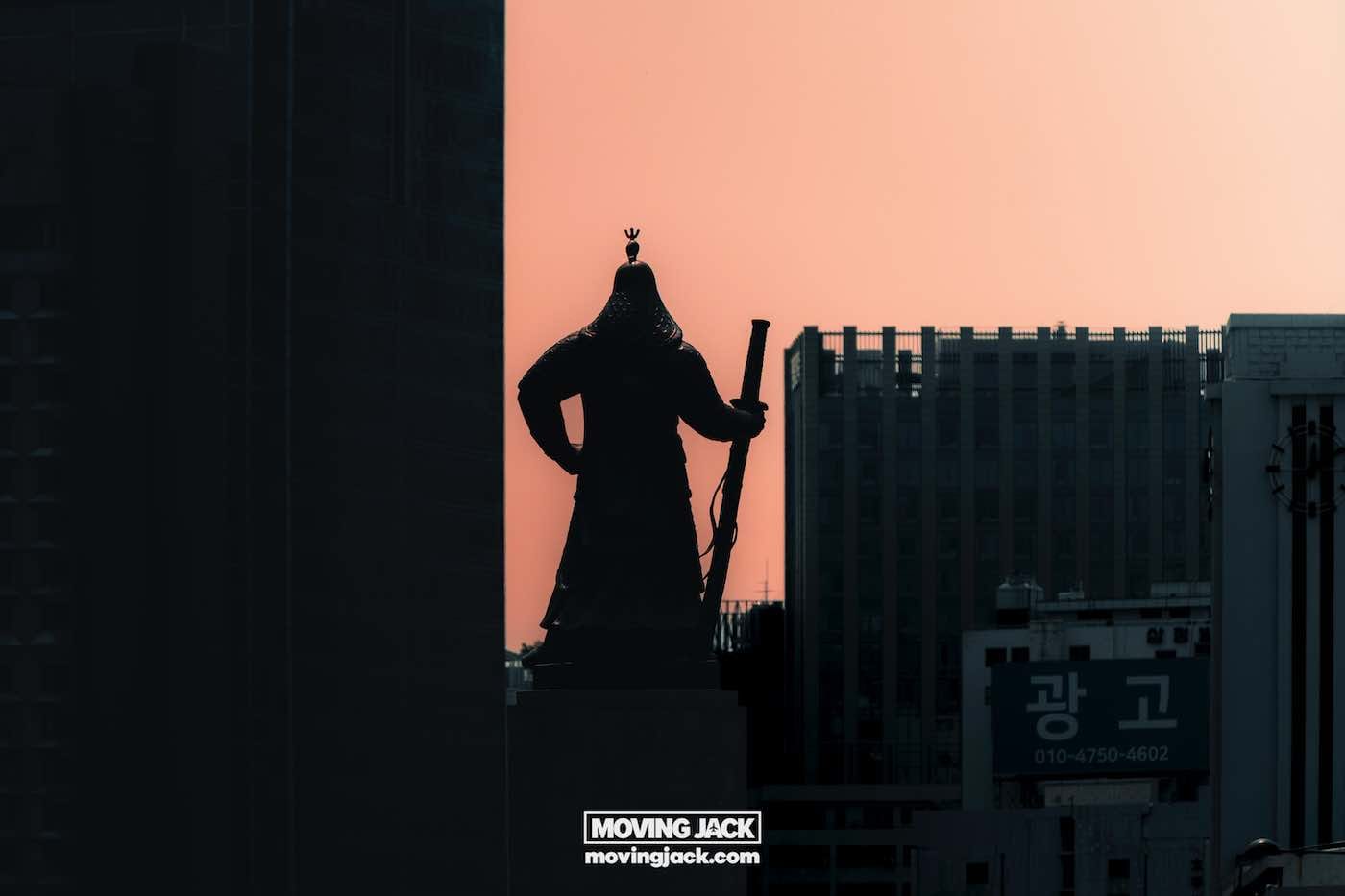
Cheonggyecheon Stream (15-minute walk)
This restored urban stream runs right through downtown Seoul and makes for a nice peaceful walk after the palace crowds. The stream itself is more of an urban planning success story than a natural wonder, but it’s a pleasant way to see a different side of the city.
I’d recommend walking east along the stream toward Dongdaemun if you have time – the walk takes you through different neighborhoods and gives you a good sense of how Seoul blends old and new. The lighting is particularly nice during evening hours.
Getting there: Head south from Gwanghwamun toward City Hall. You’ll see the stream entrances marked clearly.
Practical note: You can easily hit some of these in one day with the palace. I'd suggest: get off at Gwanghwamun station→ Gyeongbokgung Palace → Bukchon for lunch → Insadong/Ikseon-dong if you have energy left.
Insadong & Ikseon-Dong (15-minute walk)
Insadong is Seoul’s cultural district. It’s a bit touristy but still worth visiting. The main street has traditional art shops, souvenir stores, and tea houses that give you a good sense of Korean traditional culture. What I like about Insadong is that it’s where you’ll find items that actually make decent souvenirs.
Ikseon-dong was fairly unknown until locals started converting old hanok houses into trendy cafes, bars, and restaurants. Now it’s become this incredible mix of traditional architecture and modern Seoul cafe culture.
What makes Ikseon-dong special: You’ll find many local cafes and hidden bars tucked inside traditional hanok houses.
Best time to visit: Late afternoon/start evening is the most lively time after your palace visit.
Getting there: From Gyeongbokgung, it’s about a 15-minute walk south. You can also take the subway to Jongno 3-ga Station (Line 1, 3, or 5) and walk about 4 minutes.
Pro tip: Start in Insadong for the traditional culture experience, then wander into Ikseon-dong’s side streets for the modern hanok cafe scene. The contrast between the two areas perfectly captures how Seoul blends old and new. For more hidden Seoul neighborhoods and insider tips, check out my complete Seoul guide with 13 attractions.
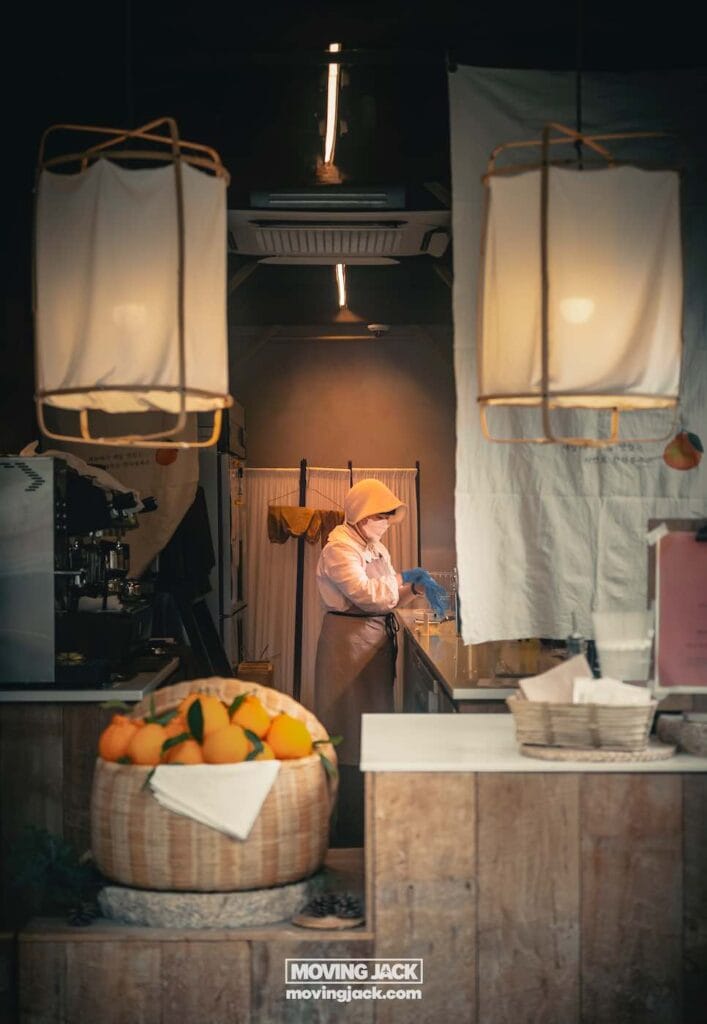
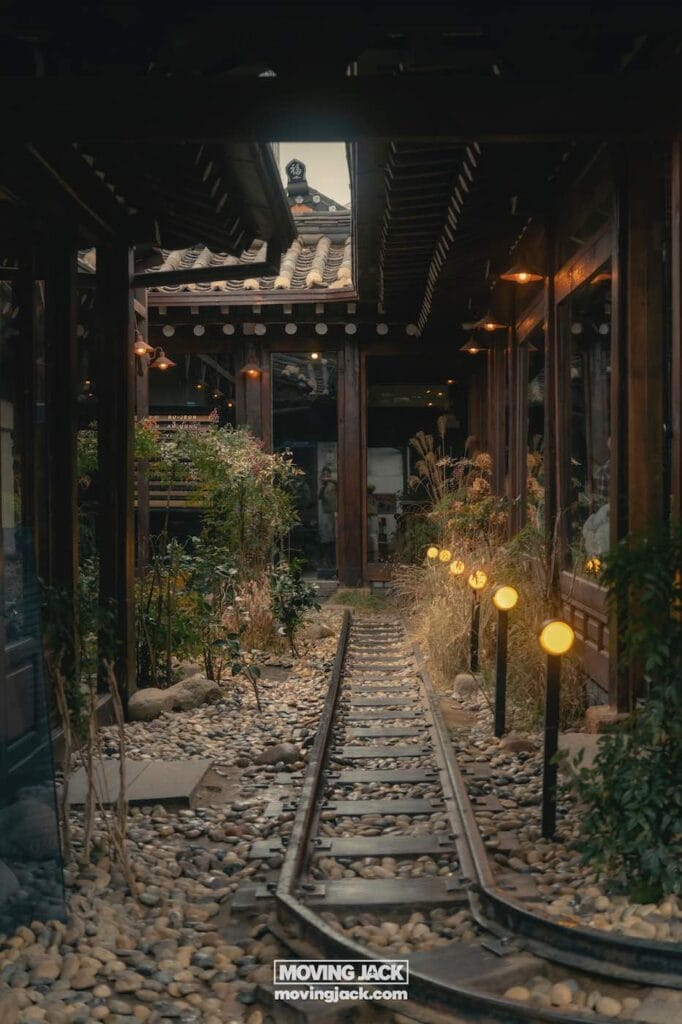
Getting Around
Current Admission Prices (2025): Check the official palace website for the most current ticket prices and any special exhibitions, but expect around:
- Adults: 3,000 KRW (~$2.30 USD)
- Youth (7-18): 1,500 KRW (~$1.15 USD)
- Children (under 7): Free
- Palace Pass (4 palaces + Jongmyo): 10,000 KRW (~$7.70 USD)
Operating Hours:
- March-October: 9:00 AM – 6:00 PM
- November-February: 9:00 AM – 5:00 PM
- Last admission: 1 hour before closing
- Closed: Every Tuesday
Getting There: Use Seoul’s subway system – it’s the most reliable option:
- Line 3: Gyeongbokgung Station (Exit 5) – 5 minute walk
- Line 5: Gwanghwamun Station (Exit 2) – 8 minute walk
From Major Seoul Areas:
- Myeongdong: 20 minutes via Line 4 → Line 5
- Hongdae: 35 minutes via Line 2 → Line 5
- Itaewon: 25 minutes via Line 6 → Line 3
- Gangnam: 40 minutes via Line 2 → Line 3
Hanbok Rental Guide
Without a doubt, wearing a traditional Korean hanbok to the Gyeongbokgung Palace experience is the best way to experience this place.
There are several shops where you can rent a Hanbok, most of the time by an hourly rate.
Oneday Hanbok: Modern hanbok styles, excellent quality
You can also reserve a Hanbok online through Klook or even book a full tour including Hanbok with Get Your Guide, which I highly recommend!
The tour is a great way to visit the palace, you’ll get lots of background information from someone that’s an expert on the palace.
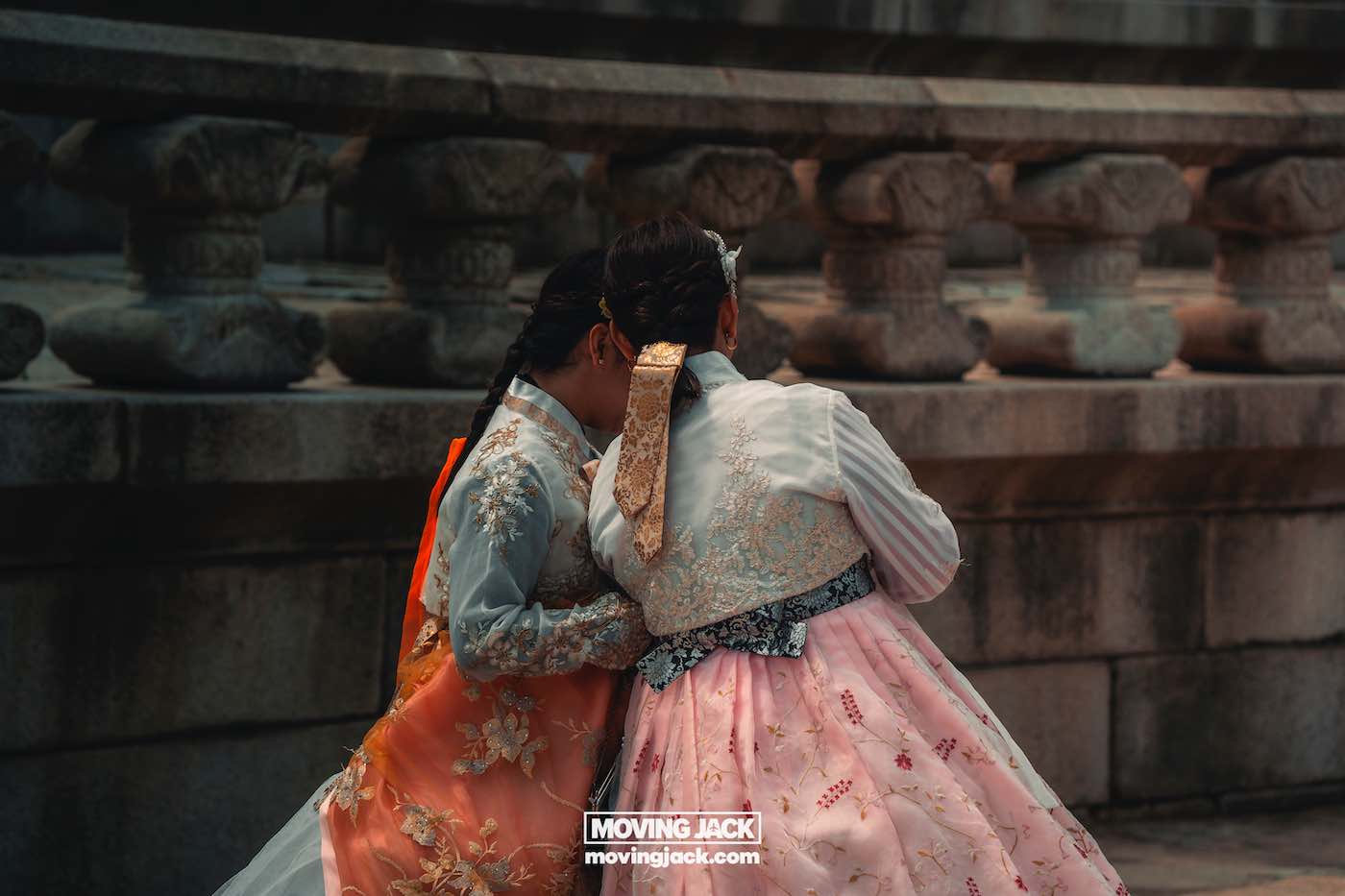
Booking Recommendations:
- Reserve online during peak seasons (cherry blossom, summer)
- Visit rental shop early morning for best selection
- Allow 30-45 minutes for fitting and styling
- Check weather forecast before booking
Final Thoughts & Tips
Ready to experience Gyeongbokgung Palace like a local? Use this guide to avoid most of the crowds, capture epic photos, and truly appreciate Seoul’s royal palace.
Don’t forget to watch the complete walking tour video above to get an impressions of the palace and see the best route.
Btw, if you have any requests for walking tour videos such as these, let me know!
Safe travels and enjoy Seoul!
Frequently Asked Questions
Here are some of the questions I get asked often.
How long does a full visit take?
Plan 2 hours for a visit. Quick visits can be done in 90 minutes.
Is Gyeongbokgung worth visiting if it’s raining?
Light rain can actually enhance the palace’s atmospheric beauty, but when it rains you’ll see far few people dressed in Hanbok clothes, which is one of the best things about the palace. Check weather forecasts and consider rescheduling for heavy rain days.
Can you visit multiple palaces in one day?
Yes, especially with the Palace Pass. Gyeongbokgung + Changdeokgung is a popular combination. Allow 5-6 hours total including travel time between palaces.
Is the palace accessible for wheelchairs or strollers?
It is partialy accessible with ramps that go through the gates.
Can I bring food and drinks?
Outside food and drinks are allowed and can be consumed in designated outdoor areas. Bring enough water in the summer, food and drink options are a bit limited in and around the palace.
Are professional photography sessions allowed?
Any kind of photoshoots, hobby or pro, is allowed from my experience. You’ll see plenty of people with professional photography gear.
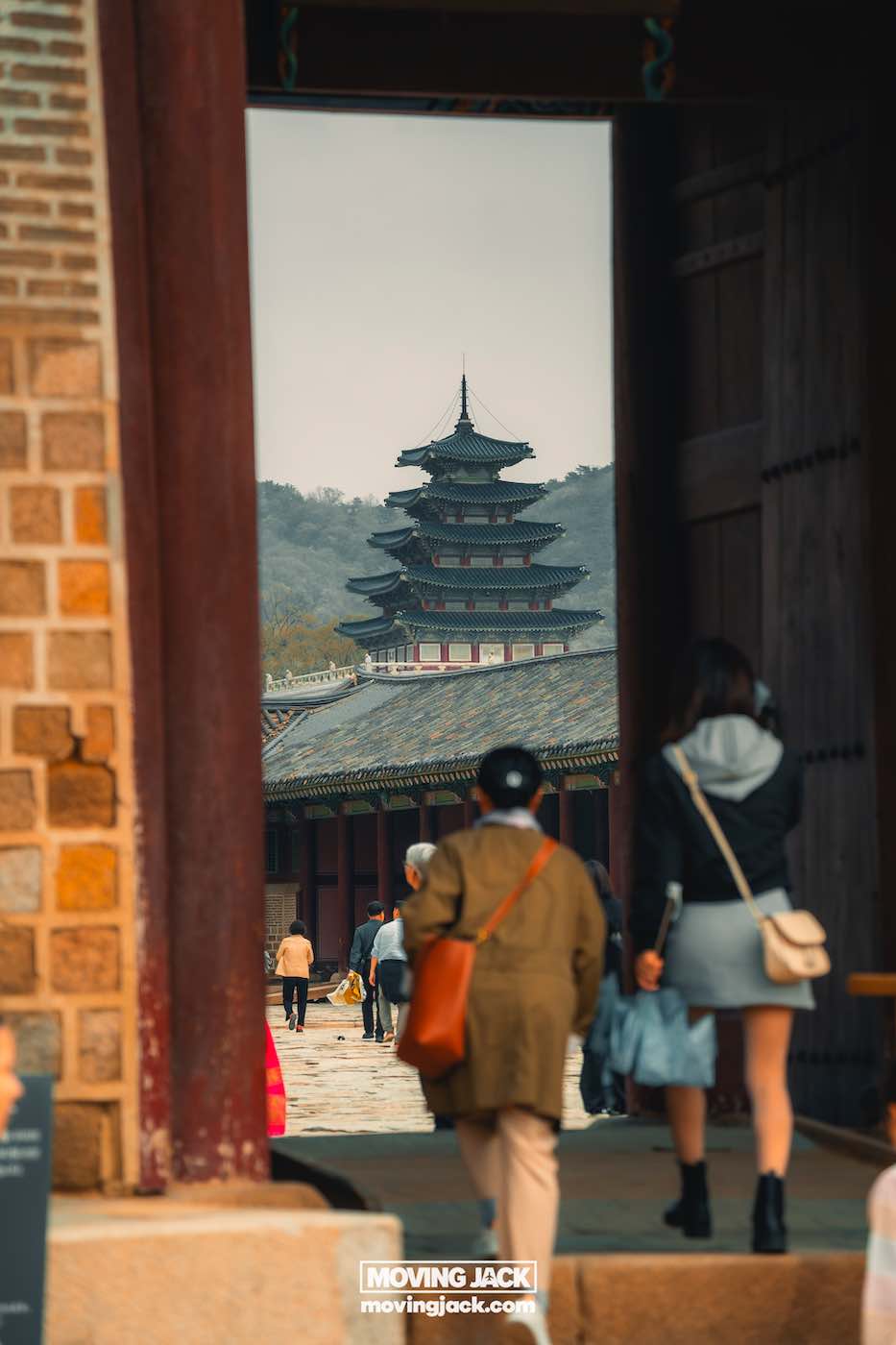


 Gyeongbokgung Palace
Gyeongbokgung Palace Best Hotels near Gyeongbokgung Palace
Best Hotels near Gyeongbokgung Palace Getting Around
Getting Around


